Get ready for an artistic adventure along Highway 1. This breathtaking coastal route isn’t just about stunning vistas—it’s a living gallery where creativity, history and natural beauty collide. From the world-class opulence of San Simeon’s Hearst Castle to charming Cambria art galleries, the Highway 1 art and culture scene is as diverse as it is inspiring. Wander through San Luis Obispo art galleries, feast your eyes on colorful street murals and immerse yourself in the lore of historic missions and adobes. Nature lovers, history buffs and art enthusiasts alike will all find a magical muse along Highway 1: Lose yourself in botanical gardens bursting with unique flora and fauna, museum-hop through amazing art and history exhibits, then dive into the joy of a local theater production complete with song, dance and audience participation. When the sun dips low, let the sounds of live music guide you from quaint coastal cafes to buzzing venues. Art and culture on Highway 1 isn’t confined to gallery walls—it’s in the very air we breathe. Where else can you admire a masterpiece, enjoy a historic walking tour and witness a vibrant coastal sunset all in one day? Your next artistic revelation is just around the bend on Highway 1. Which hidden cultural gem will captivate you first?
Explore Art & Culture Along Highway 1
Art & Culture in San Simeon & Cambria
Hearst Castle
World famous Hearst Castle stands as San Simeon’s most opulent cultural gem. In 1912, William Randolph Hearst broke ground on the famed estate designed by architect Julia Morgan. The late great publishing mogul spared no expense in design or style, collecting coveted art and antiquities to fill his new home. Perched atop a hill in the Santa Lucia Mountains, the “enchanted castle” eventually spanned 90,000 square-feet with staggering views of the Highway 1 coastline and the surrounding Hearst Ranch below. From impressive pools and manicured gardens to Hearst’s treasure trove of museum-worthy art and antiques, there’s much to marvel at. Take a tour of the estate and see for yourself. Be sure to keep an eye out for the 3,000 year-old statue of the Egyptian goddess Sekhmet, 15th-century Spanish ceilings and ancient Chinese vases, among other incredible artifacts. Now included in the California State Parks system, you’ll also find a robust visitor’s center, gift shop and bookstore to explore. Want to learn even more about the castle? An onsite IMAX theater screens a fascinating documentary centered on Hearst’s larger-than-life legacy.
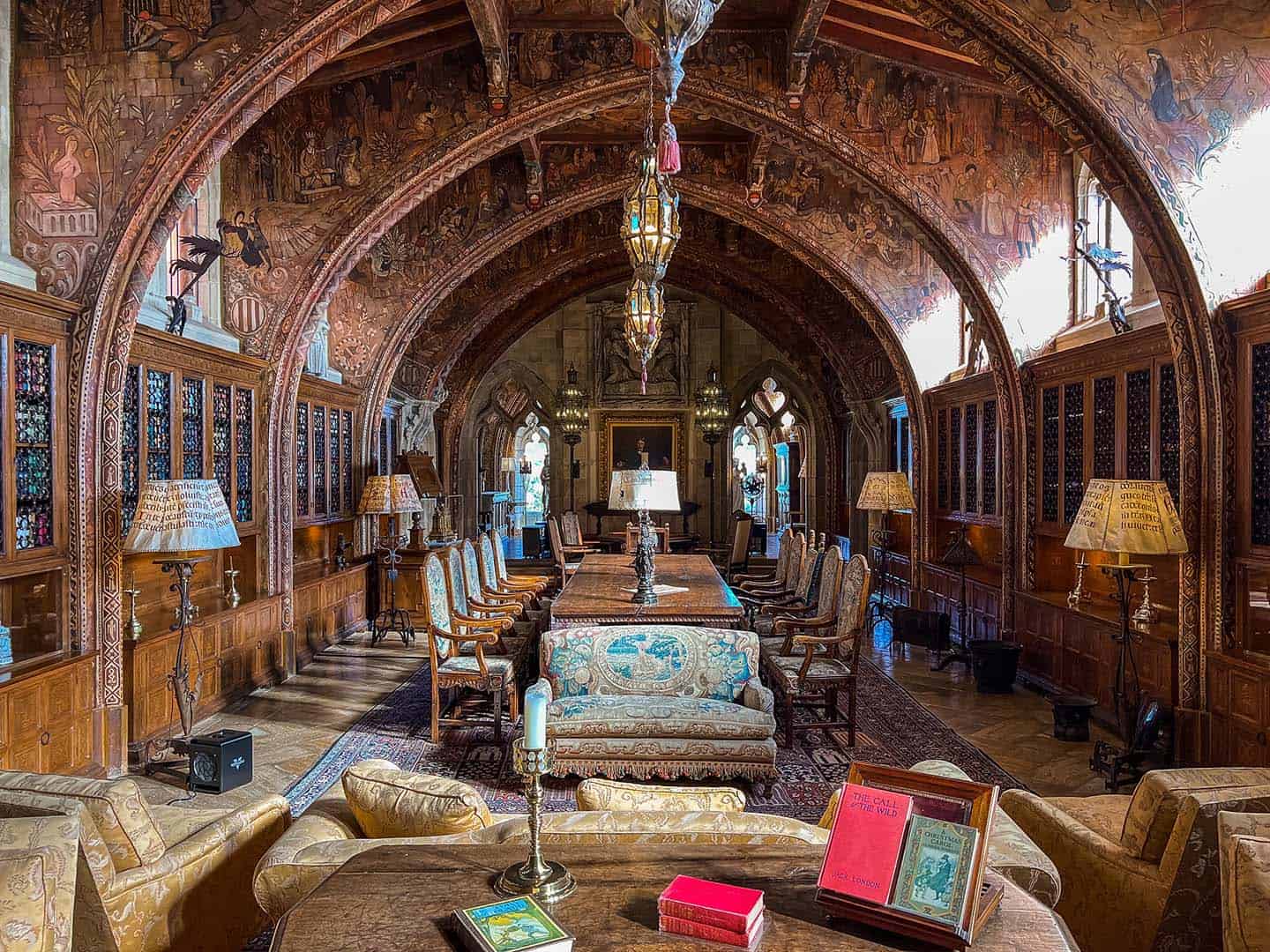
Cambria Center for the Arts
The Cambria Center for the Arts combines exciting art education with vibrant gallery space. Plays, film screenings, art shows, classes and lectures are all accessible thanks to this invaluable nonprofit resource. Located inside the old Cambria Grammar School, the cultural destination serves as an important central hub between Cambria’s East and West Villages. Here, artists showcase their work in a continuously running gallery. Starting in the mid-1940s, the gallery grew to include local and nationally known visual and performing artists. Today, the Cambria Center for the Arts remains a home base for locals and visitors to discover new works. Catch theater and musical groups performing throughout the year, the annual four-day Cambria Film Festival or various art shows. Want to make your own art? Come for classes, workshops and lectures discussing diverse topics like sculpture, storytelling, filmmaking and more.
Cambria Historical Museum
A historic stop all around, the Cambria Historic Museum is a go-to for Highway 1 insight and lore. Located in Cambria’s iconic 1870 Guthrie-Bianchini House, this charming museum represents just one of many historic buildings of note. Once known as “Slabtown,” Cambria thrived thanks to milling, ranching, whaling and mining industries—with many related homes still standing today. Enjoy a walking tour of the area courtesy of the museum (a map and guide can be obtained online or at the museum). Focusing on the historic homes of Cambria’s East Village, the walking tour showcases 28 buildings of interest, including the pint-sized Santa Rosa Chapel, Camozzi’s Saloon, and many private homes. Want to know why 4111 Bridge Street is called “The Bucket of Blood?” You’ll have to take the tour to find out. Don’t miss the Guthrie-Bianchini House’s well-tended heritage gardens, a great photo-opp after returning from your stroll.

The Vault Art Gallery
One of the foremost art galleries in California, The Vault Gallery has delighted art lovers since 1991. Located inside Cambria’s historic Bank of Cambria building, owner Laylon Whittaker opened the gallery with the aim of featuring California plein air painters, contemporary artists and photographers. Over the years, many art careers have launched from this iconic gallery space—a tradition that continues to this day. View contemporary works of Steve Johnston and famous graffiti artist Banksy, whose work is shown in the U.S. exclusively at The Vault. Also on display? The work of Helene Wilder, a celebrated portrait artist from Santa Fe, as are the crisp architectural paintings of Mark Beck. Don’t miss the opportunity to appreciate true masterworks in this quaint and unique downtown Cambria setting.
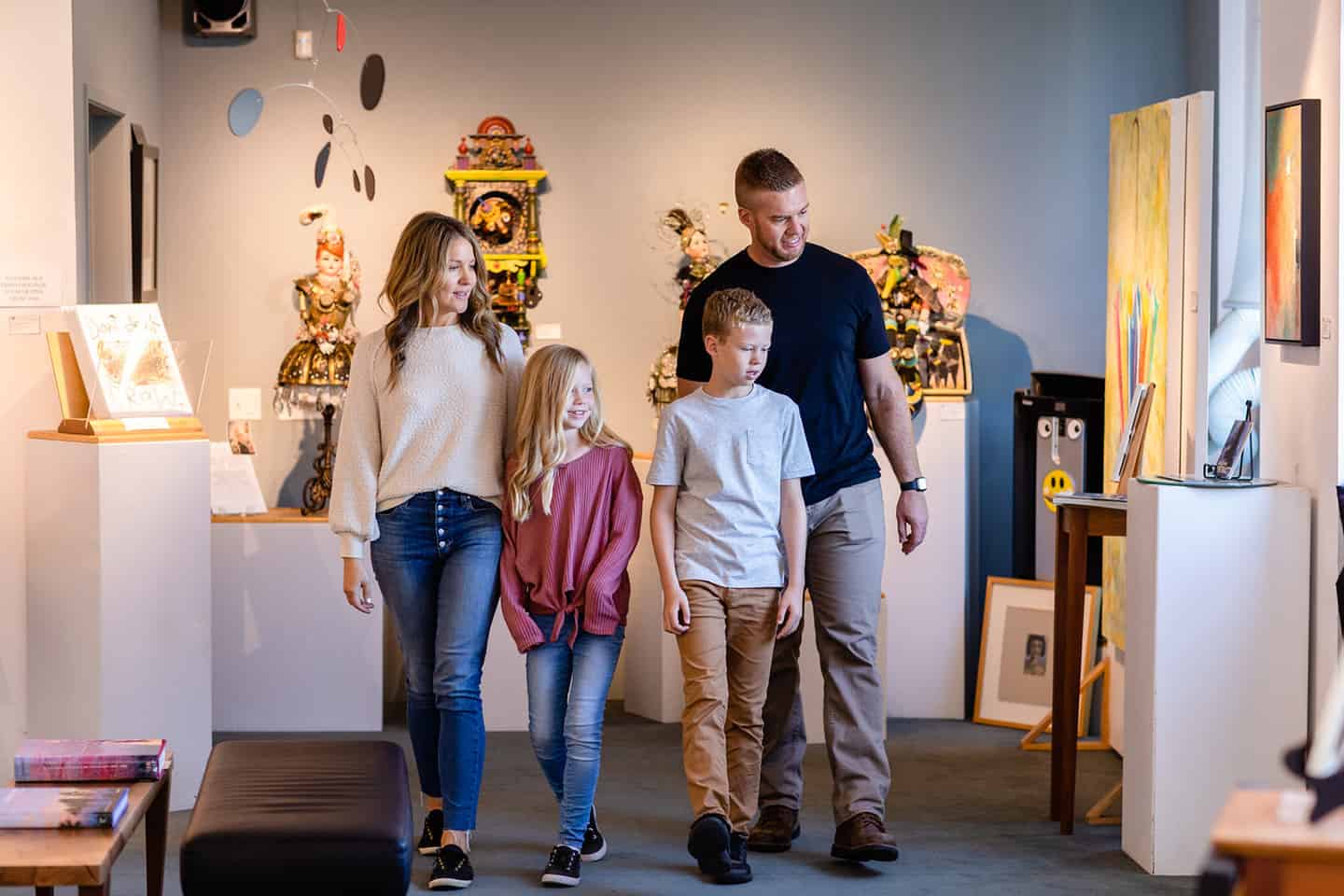
Community Murals
Community color is everywhere in Cambria if you know where to look. Go for a sunny stroll through town and check out the vibrant mural on public display outside the Cutruzzola Vineyards tasting room, then stop in for delicious wine offerings. You’ll also find eye-catching public artwork showcased at Slabtown Mercantile, a great place to shop for creative souvenirs. Both of these mural works of art were facilitated by Cambria’s Community Mural Project, a community effort aimed at bringing a dose of fresh creativity into the downtown area.
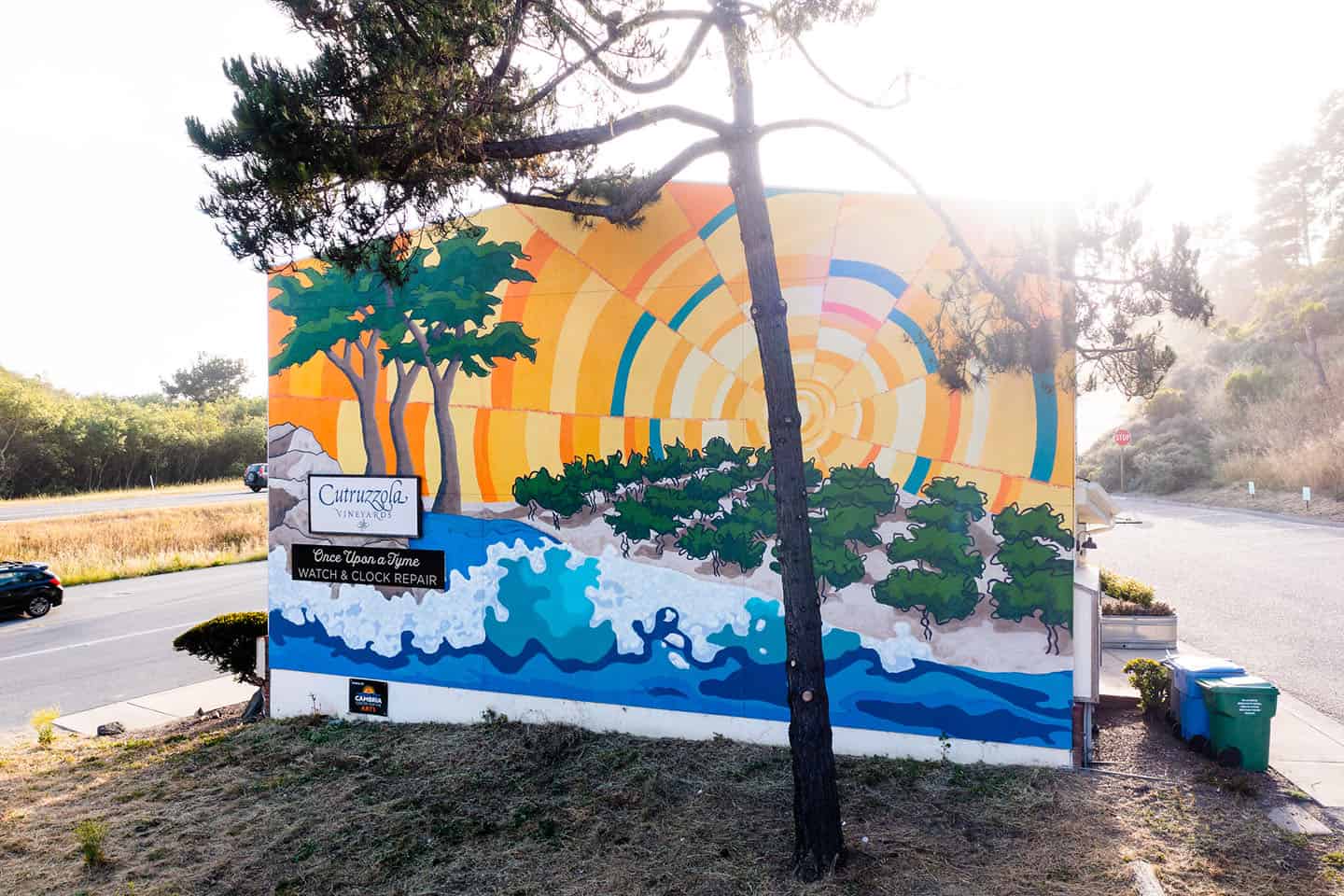
More in San Simeon & Cambria
Want to learn more about arts and culture in San Simeon and Cambria? From the Old Schoolhouse to the popular Discovery Center mural, you’ll find countless venues sure to enliven your visit. Check out these great San Simeon and Cambria art galleries, creative hubs, work spaces and more.
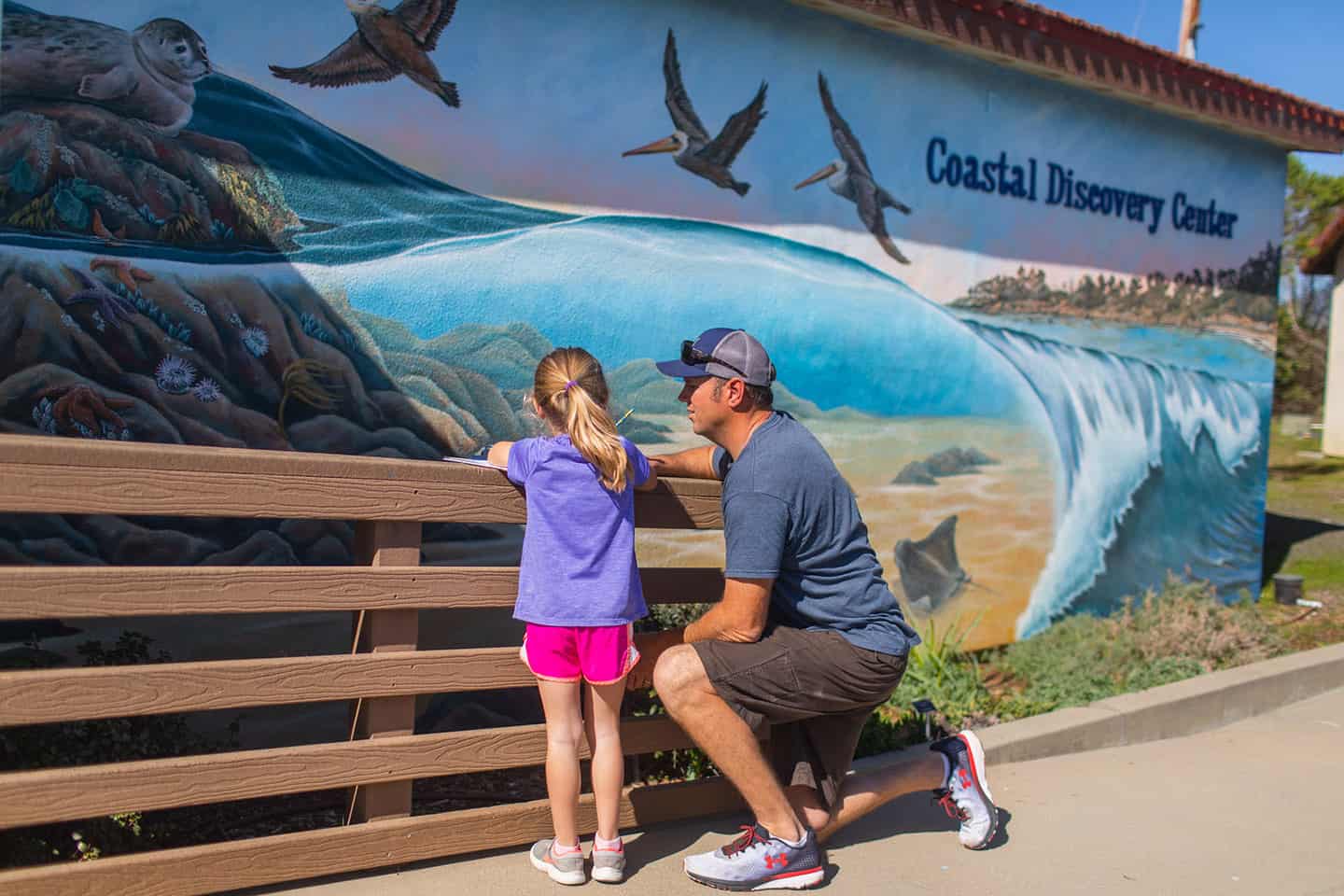
Art & Culture in Cayucos
Cayucos boasts a handful of worthy murals, so keep your eyes peeled while making your way around town. The Way Station Building Mural, housed in what was once known as the “Old Pedraita Building,” is one such masterpiece. Built in 1876, this historic locale was once a hotel favored by famous guests, including The Hearst family. Today, look for the building’s impressive mural, officially dubbed “Delivery at the Cottage Hotel,” repainted and restored by distinguished artist Manuel Cruz III. Located on Ocean Ave and overlooking Little Cayucos Creek, this is a wonderful spot to take a breather or photo opp. You’ll also find Lunada Garden Bistro/Venue at the Way Station, with Luna Coffee Bar nestled just behind on the beautiful garden patio.
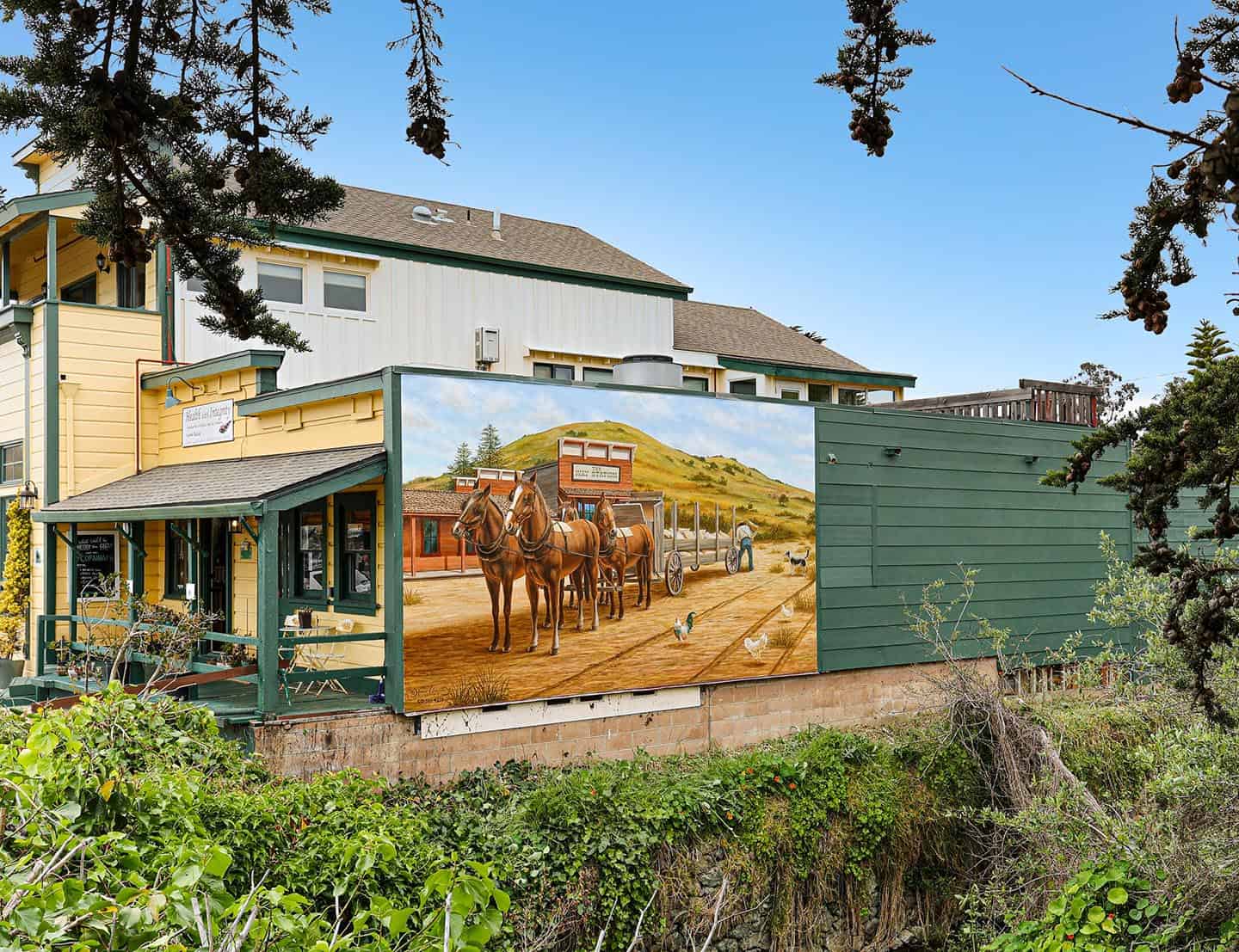
Cayucos Collective
At the heart of downtown Cayucos, you’ll find Cayucos Collective art gallery and custom printing studio. Established in 2014 by longtime surfers, skaters and artists, the business started as a blog and online art gallery celebrating Central Coast beach culture. Today, this brick-and-mortar gallery features an eclectic mix of handmade pieces you won’t find elsewhere. Take a spin around the collective and enjoy the ride: Paintings, jewelry, sculptures and more are all crafted by local artists. In fact, house artists are on hand to create your very own wearable souvenir. Simply provide your own images and artwork to be emblazoned onto a shirt, trucker hat or hoodie. Made with top tier garments on Cayucos Collective’s DTG printing equipment, your item is then bundled into a trademarked take-out container, ready for the road.
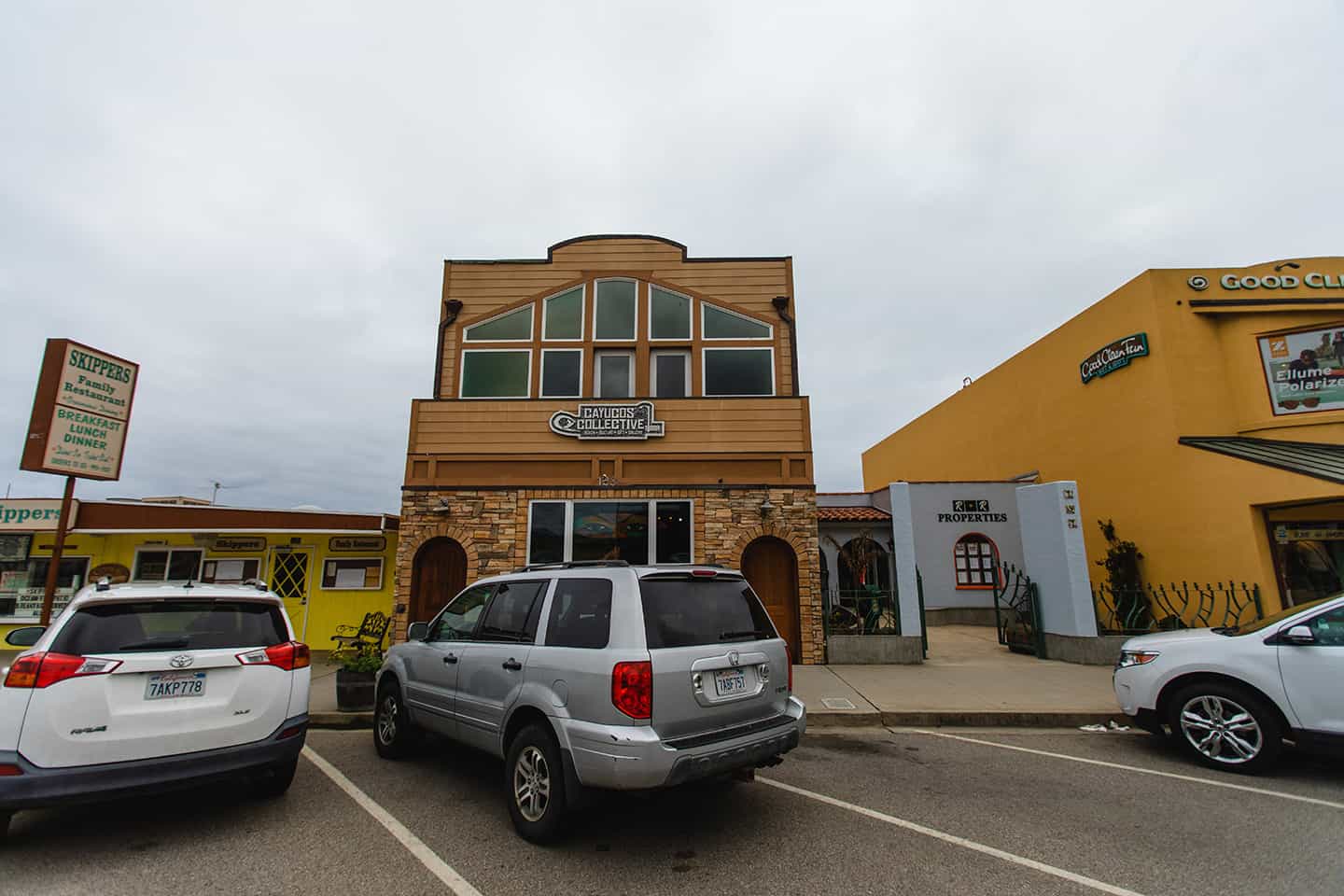
Maven Leather + Design
Situated just a block away from the ocean in Cayucos, Maven Leather + Design showcases stunning handcrafted leather purses and bags inspired by the American wilderness. Founded by Emma Thieme, an artist, natural dyer and auto trimmer, this delightful storefront offers unique originals as well as limited edition Core Collection pieces created with the assistance of local artisans. Although the business started on the East Coast in 2015, Maven Leather + Design has become a symbol of high-end sustainable craftsmanship on the Central Coast. By using botanical dyeing processes, foraged materials and other natural production techniques, Thieme ensures each piece is both elegant and eco-friendly. Featuring a variety of earth-toned totes, crossbody bags and purses made from free-roaming American buffalo and embellished with solid brass hardware, there’s a distinctive Cayucos-crafted bag to suit every style. Additionally, this working studio and storefront represents more than 30+ independent designers and artists from the Central Coast and beyond.
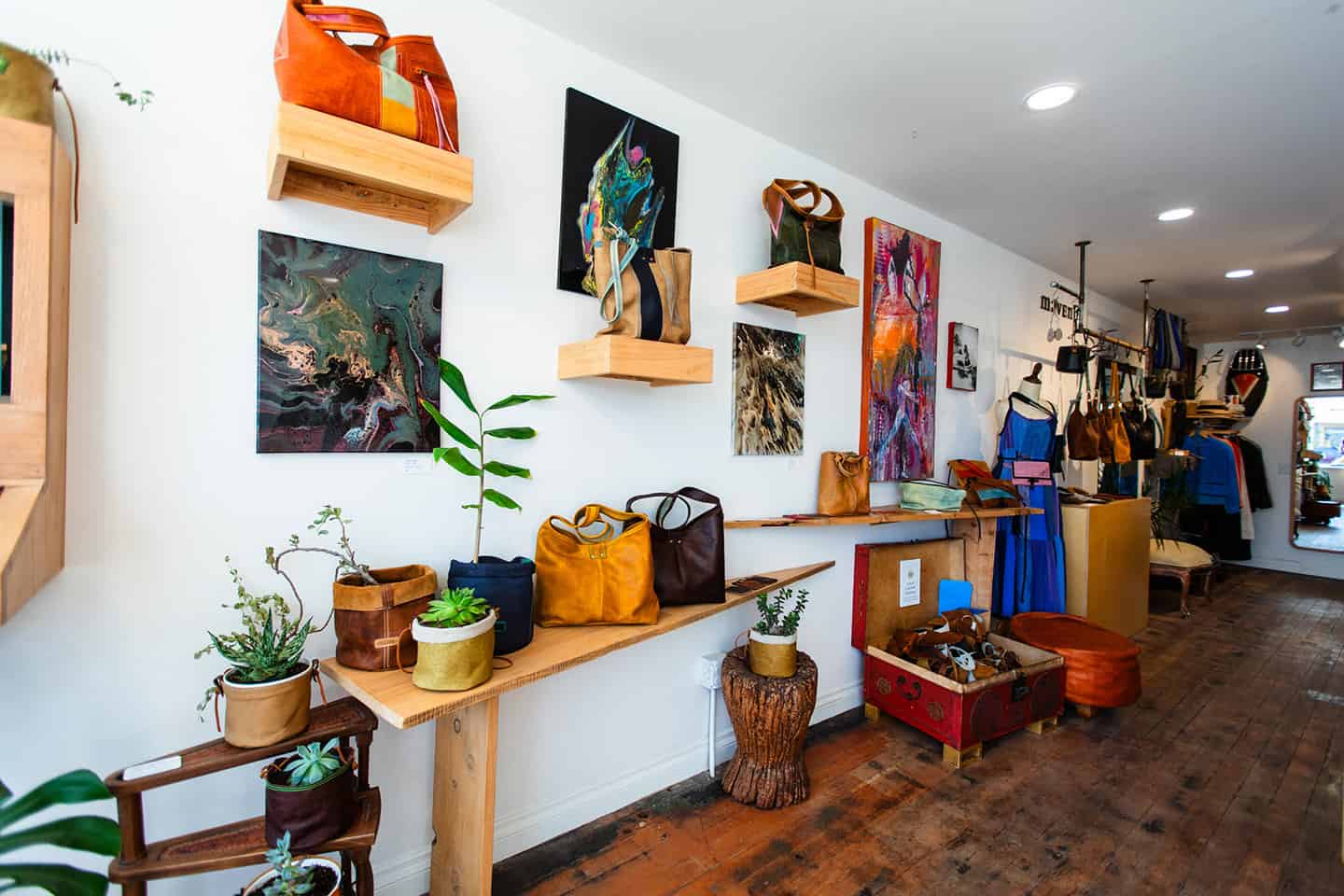
Mermaid Rock Soap Co.
Nestled across from the picturesque Cayucos Beach, Mermaid Rock Soap Co. embodies the rich tradition and artisanal charm of handcrafted soapmaking. Inspired by her grandmother and great-grandmother, who crafted soap from farm-harvested lard to ensure nothing went to waste, the founder’s passion for soaping began at a young age. Mermaid Rock Soap Co. offers custom wedding favors and personalized thank you gifts, with custom-designed soap sizes and fragrances available for special orders with a six-week notice. Every product from Mermaid Rock Soap Co. is crafted with love, imagination and practicality in their Cayucos workshop. This idyllic seaside location fuels the creativity behind each soap, ensuring that every bar is a unique piece of consumable art. Great for birthday gifts and Highway 1 souvenirs, these luxury soaps and bath and body products can be tailored to meet any recipient’s desires. Explore the shelves of fragrant soap bars and bath bombs handcrafted to perfection.
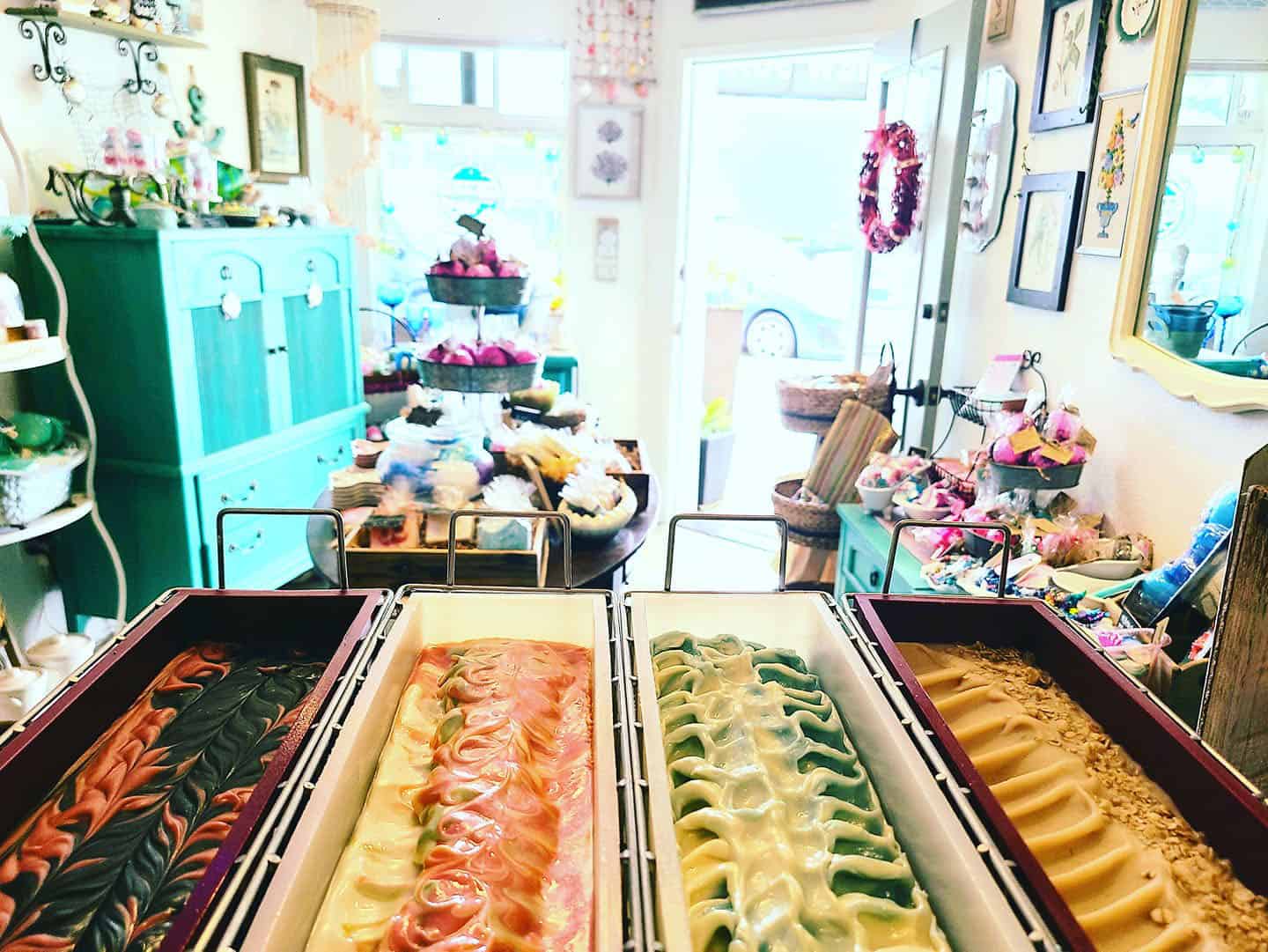
More in Cayucos
Experience more art and culture in downtown Cayucos. From murals and galleries to workspaces and more, check out these dynamic creative hubs showcasing diverse disciplines and mediums.
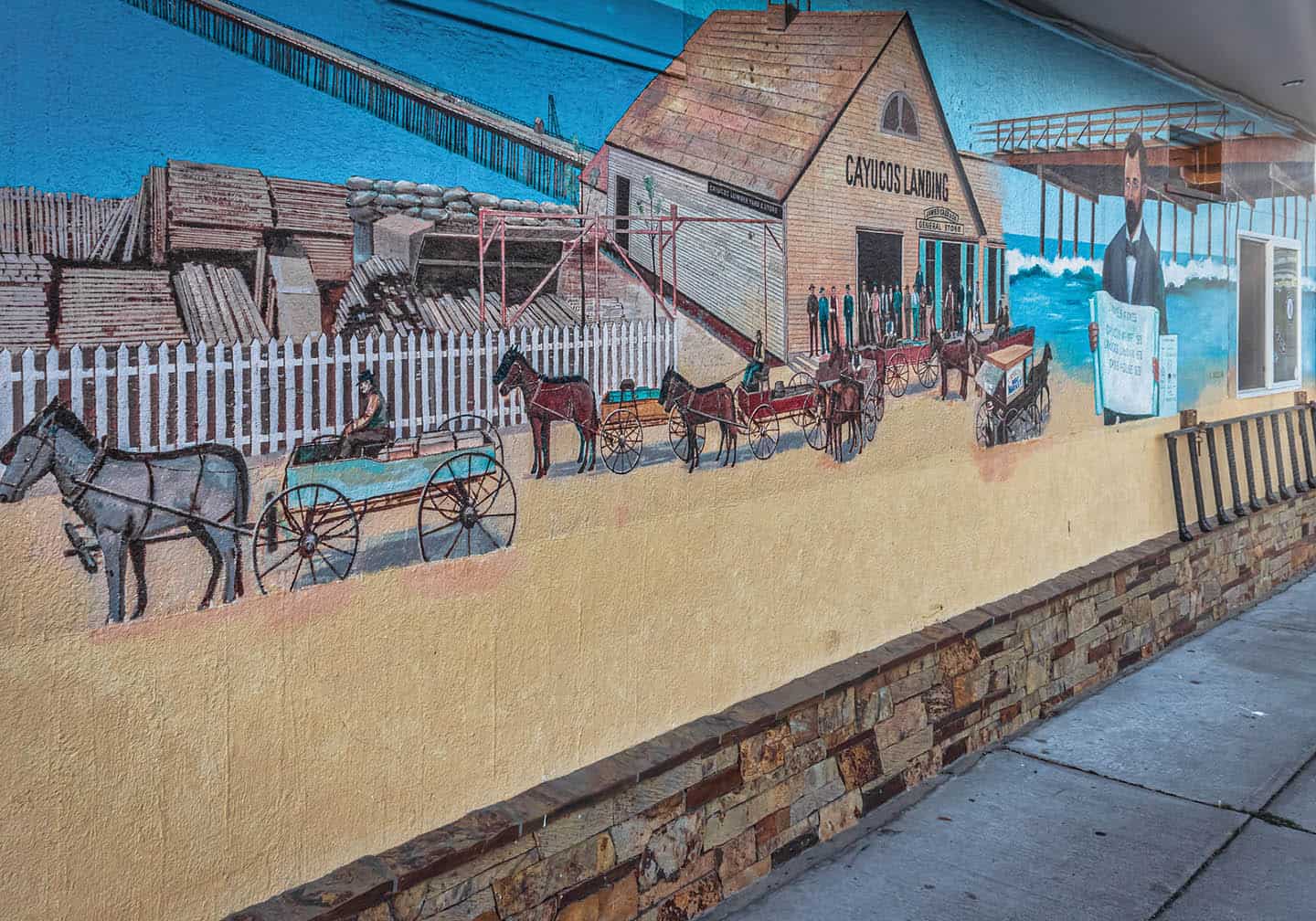
Art & Culture in Los Osos
Community Murals
Art pops of the woodwork in Los Osos, home to a handful of exciting public murals. Find one such specimen downtown, on the back wall of the Los Osos Liquors and Market building at 2004 10th Street. There, “Portola’s Sacred Expedition” depicts what life might have looked like hundreds of years ago. Native animals and inhabitants take center stage, backdropped by rolling coastal hills. In 1992, the celebrated mural was painted by the Los Osos Community Organization (LOCO). The work was recently restored by a dozen Celebrate Los Osos volunteer painters under the supervision of Barbara and artist Ken Christensen.
More in Los Osos
Looking for more arts and culture viewing opportunities in Los Osos? You’ve come to the right place. Check out our array of creative offerings sure to delight all ages.
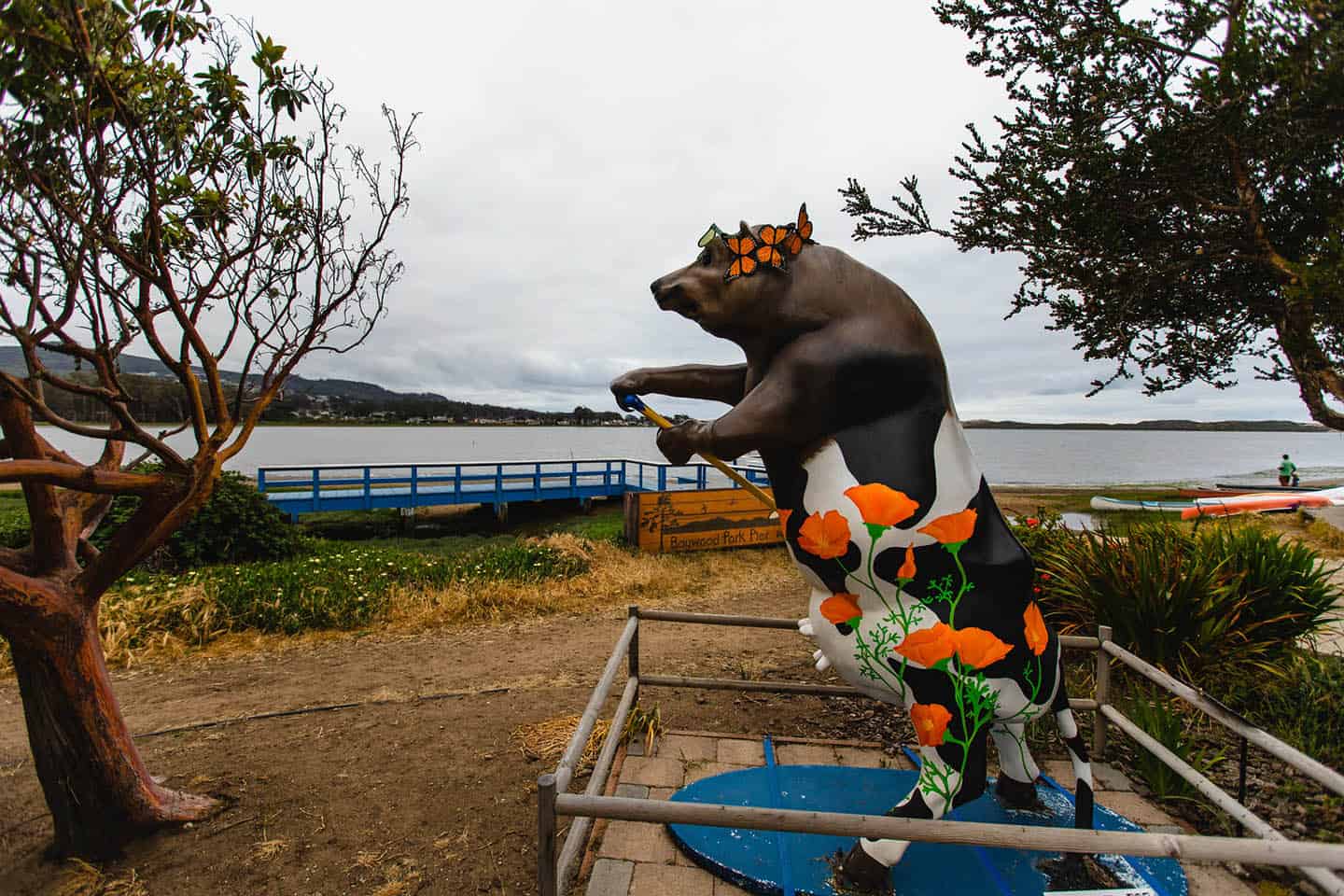
Art & Culture in Avila Beach
Lifeguard Tower Murals
With its white sand and colorfully painted lifeguard towers, Avila Beach is what California dreams are made of. Longtime resident and painter Colleen Gnos is responsible for creating the unique public artscape, the first of its kind in California. Inspired by summers on the beach, Gnos covered two 12-foot-tall towers with expressive scenes depicting the coastal area’s past, present and future. Located on either side of the Avila Pier, the towers provide a look back at Avila Beach’s historical coastline, featuring images of lifeguards, deep-sea divers, surfers and fishermen. The artist even included Buster Blue, a macaw known to beg visitors for french fries. Look also for depictions of whales breaching in Avila Bay, kayakers on the water and the longstanding Avila Beach Junior Guards program for kids. Visiting Avila Beach, all you need to do is look out at the pier for a glimpse at this ongoing public art show.
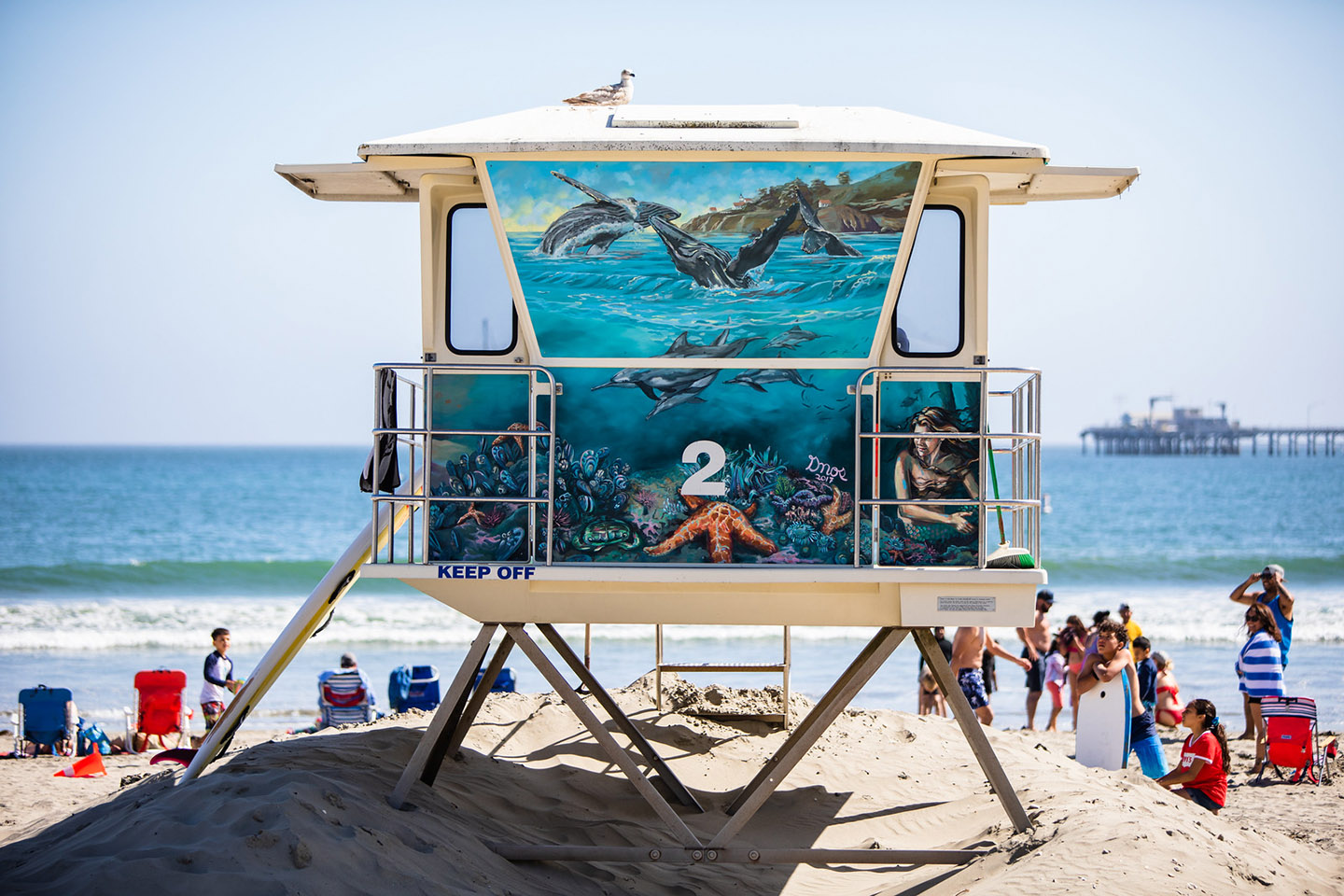
Point San Luis Lighthouse
Discover the rich maritime history of the Central Coast at the Point San Luis Lighthouse in Avila Beach. This beautifully restored beacon, dating back to 1890, offers visitors a captivating glimpse into the lives of lighthouse keepers and their families. Knowledgeable docents lead interpretive tours through the lighthouse, hornhouse, and surrounding structures, bringing the site’s fascinating past to life. As part of the Port San Luis Harbor District, this historic landmark plays a crucial role in preserving the area’s marine heritage. The Point San Luis Lighthouse Keepers, a 501(c)3 charitable organization, dedicates itself to maintaining and operating the lighthouse as an educational and recreational site. Their mission ensures that this coastal treasure remains accessible for future generations to explore and enjoy. Beyond its historical significance, the Point San Luis Lighthouse serves as a stunning venue for special events, including weddings and educational programs. These activities, along with tours, memberships and donations, contribute to the ongoing preservation efforts. Whether you’re a history enthusiast, nature lover, or simply seeking a unique coastal experience, the Point San Luis Lighthouse offers an enriching journey through time against the backdrop of Highway 1’s breathtaking coast.

More in Avila Beach
Known for its stunning natural beauty, Avila Beach is home to enticing arts and culture opportunities you won’t want to miss. Amid the galleries and showrooms, you’ll find a unique coastal collection unlike any other.
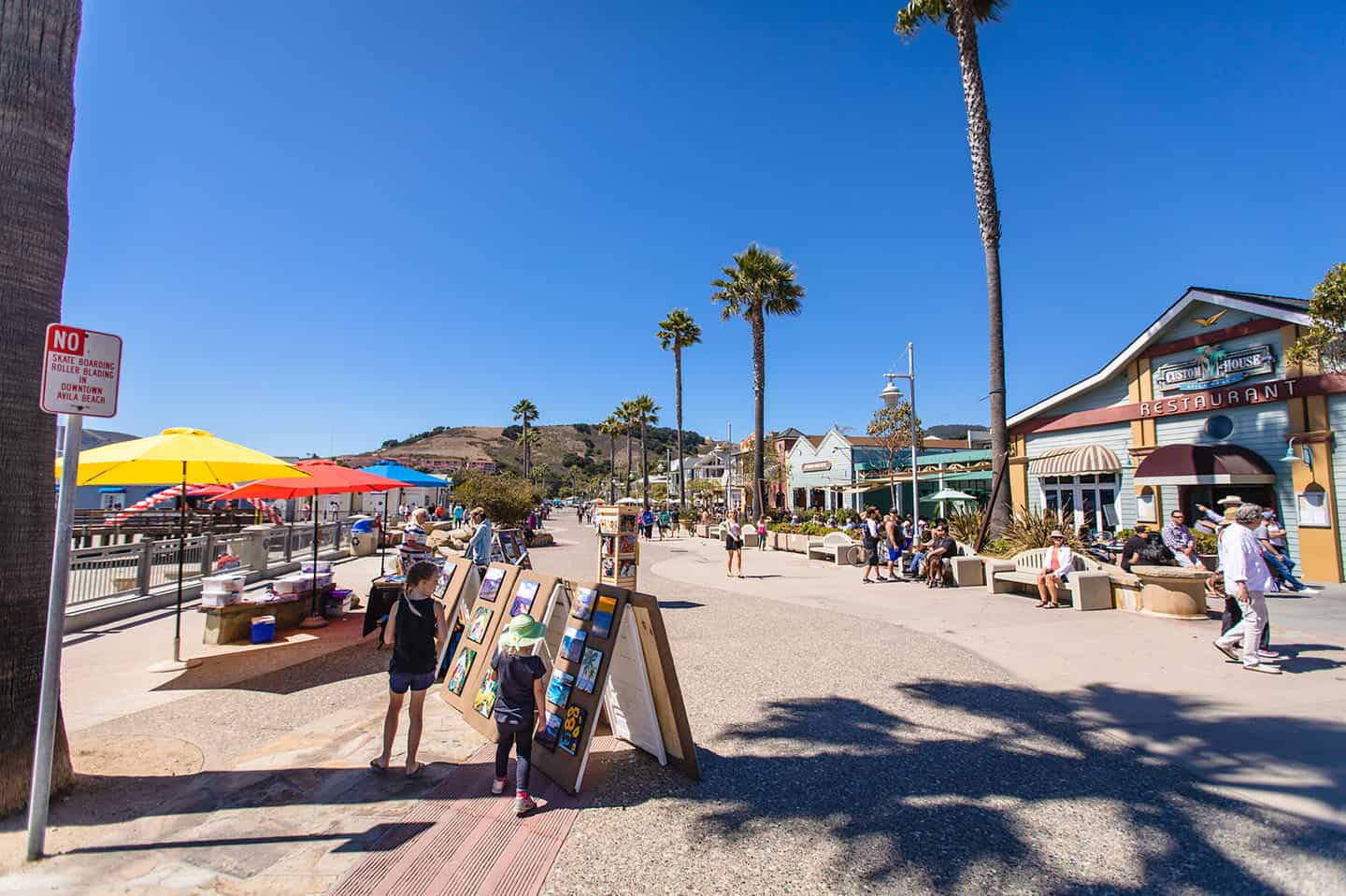
Art & Culture in Edna Valley & Arroyo Grande
Heritage House Garden & Museum
With old fashioned charm to spare, the Village of Arroyo Grande proudly showcases its history. Explore the Heritage House Garden and Museum, honoring Arroyo Grande’s historic inhabitants. The house and museum are maintained by the South County Historical Society and are accessible via South Mason Street, across from the historic Swinging Bridge. Once the property of Charles A. Pitkin, the house-turned-museum has stood the test of time (it was built in the late 1800s). After a series of various tenants—including a day care and the City Recreation Department—the Heritage House underwent major restoration in1997. Today, it houses period clothing, kitchenware, photos, artwork and more. As part of the restoration, the city of Arroyo Grande also installed a gazebo, lawn and lush gardens. Naturally, this venue is a popular choice for weddings and other events. Visit this beloved local site to enjoy a scenic peek at yesteryear.
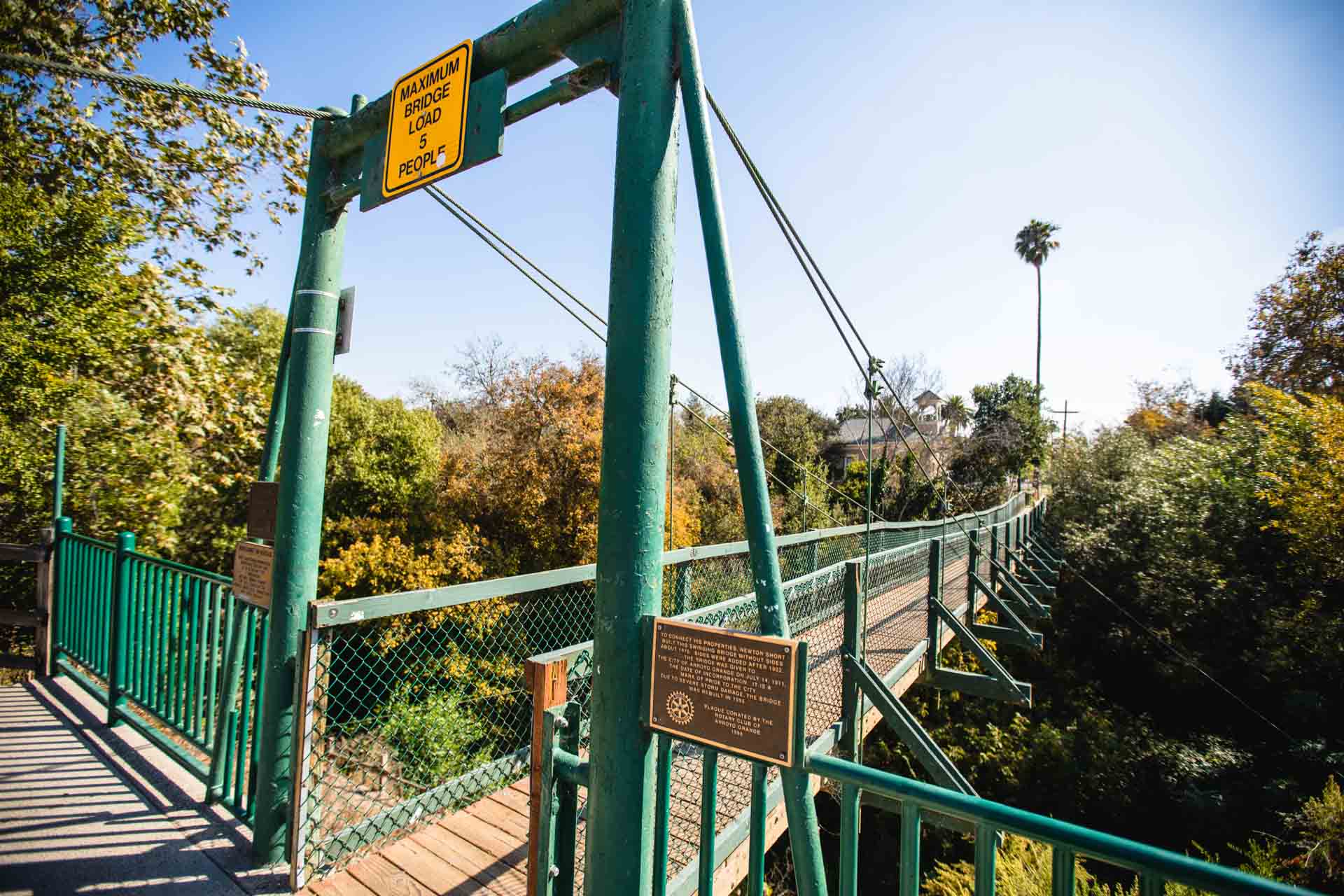
Barn Museum
Located behind the Heritage House and Gardens in Arroyo Grande, “the Barn” serves as the South County Historical Society’s museum annex. In this antique barn, you’ll find historical society artifacts from Arroyo Grande’s long agricultural history, including plows, wagons, vintage ranching equipment and mercantile artifacts. Other items include antique carriages, a horse-drawn hook and ladder fire carriage and a 1923 LaFrance fire truck. Discover signage from the old Greyhound Bus depot, vintage printing presses, tools and more—all gleaming before your very eyes. Bonus: Just steps away, find the one-room Santa Manuela Schoolhouse, built in 1901. The schoolhouse is one of a very few remaining historic schoolhouses in San Luis Obispo County. Young students will especially enjoy walking into the classroom remembered by bygone generations.
Clark Center
The Clark Center in Arroyo Grande offers up exciting national and local acts, including notable theater and live music performances. The state-of-the-art venue includes the 617-seat Forbes Hall as well as the 120-seat Studio Theater. It’s no wonder why the Clark Center has become a hub for the performing arts on Highway 1, hosting acts like The Drifters, Roy Orbison, John Craigie and comedy festivals. The center also hosts local performances from groups as varied as the San Luis Obispo Symphony, Orchestra Novo, and the Stone Soup Music Festival. Located on the northwest corner of the Arroyo Grande High School campus, the venue doubles as a home for the high school’s drama department, hosting year round fun. Be sure to check out the gallery that wraps around the lobby of the hall, a prime location for local artists to display their work.
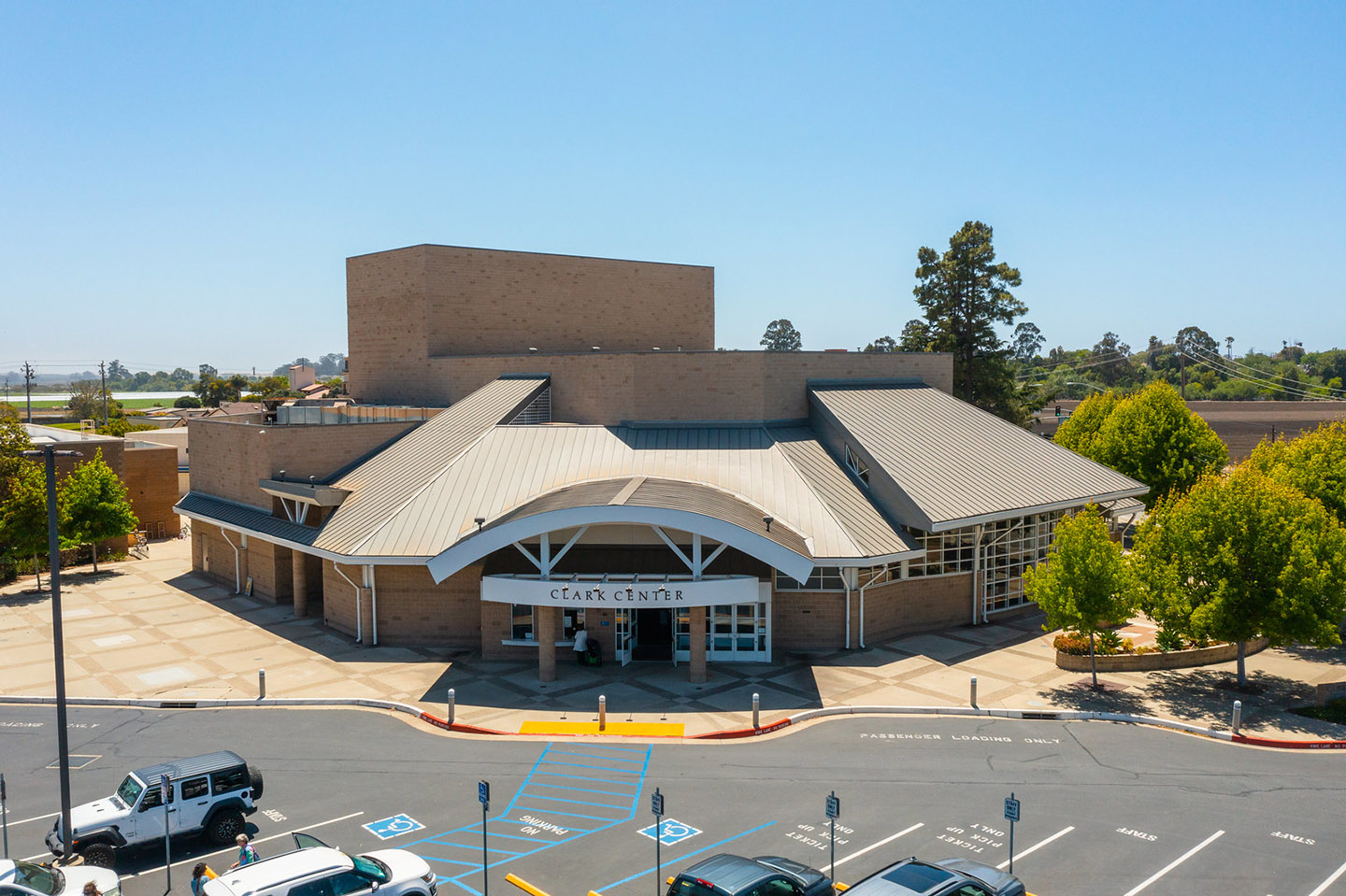
More in Edna & Arroyo Grande
From historic works to modern masterpieces, Arroyo Grande is home to a bevy of awesome art and culture viewing opportunities. Get going and check out all the treasures on display in this charming community.

Art & Culture in Nipomo & Oceano
Train Depot Museum
All aboard a fascinating museum-going experience! The Oceano Train Museum houses artifacts, photos and stories from San Luis Obispo County’s railway heyday. At the turn of the 20th century, this building represented the center of commerce and development for the region, offering railway transportation as well as telegraph service. Today, the space features displays on railroad tools, Southern Pacific collectibles and WW2 memorabilia. Constructed in 1869 by The Southern Pacific Railroad and refurbished by the Oceano Improvement Association, the formerly run-down building stands as a shining reminder of human ingenuity. Learn how the train depot and its technologies contributed to the growth of San Luis Obispo County. You can even explore a pair of vintage train cars!
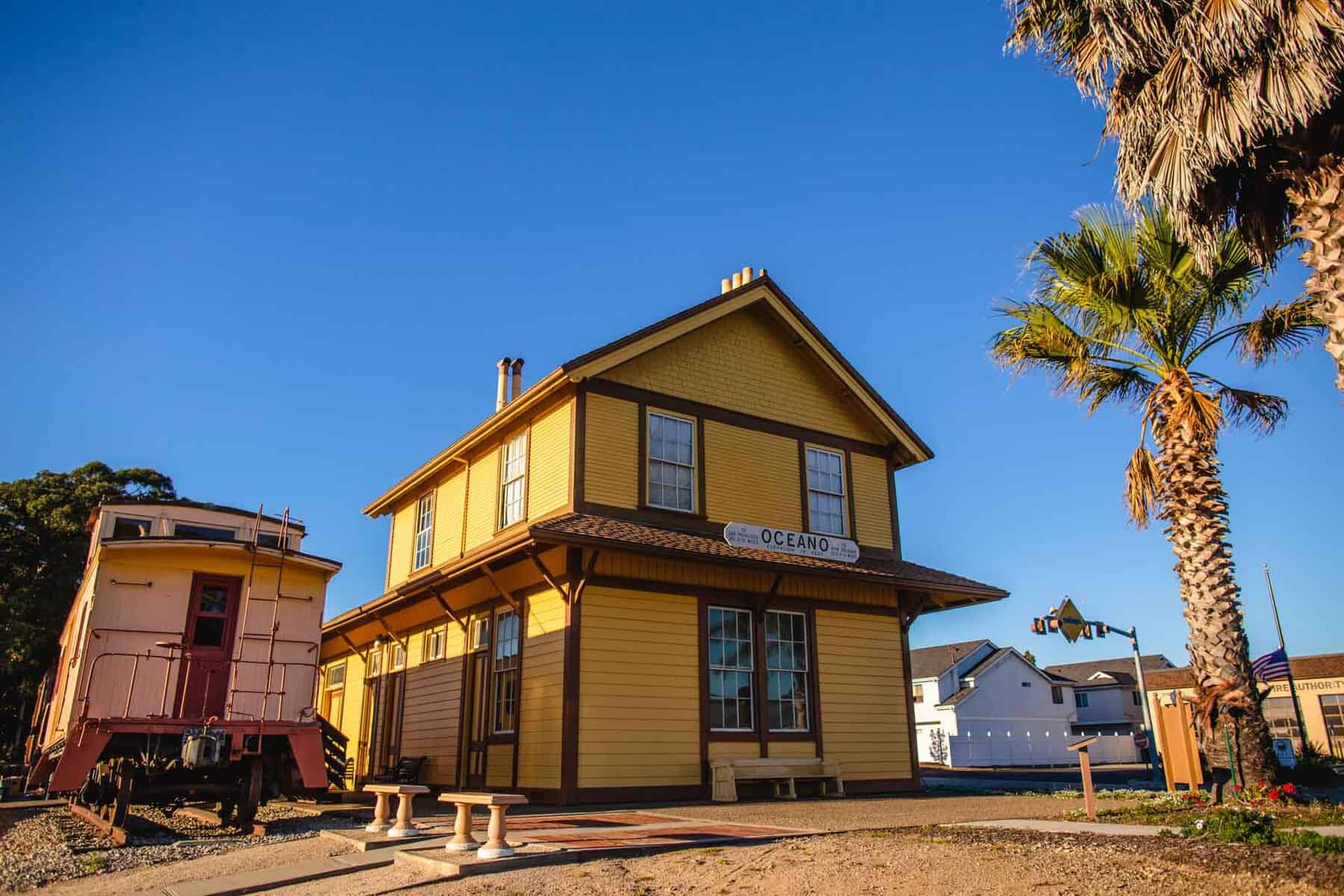
The Great American Melodrama
One of Highway 1’s most beloved hidden treasures, the Great American Melodrama in Oceano offers uproarious live theater entertainment for the whole family. Since 1975, the Melodrama has performed authentic melodramas, a style of theater that features outrageous plot turns, plus outsized heroes and villains. The theater encourages booing and cheering, bringing audience members into the story with lively acting and zany gags. Shows run throughout the year and include a vaudeville revue at the end of each performance sure to get you chuckling. Of particular note are the Holiday Extravaganza and Halloween shows—annual performances so popular, tickets are known to sell out. Plan to come hungry, as the Melodrama offers a snack bar where simple meals, desserts, beer and wine are sold. Now, sit back and enjoy the very best live professional theater on Highway 1. Be sure to stay after the show to take photos with your favorite members of the cast.
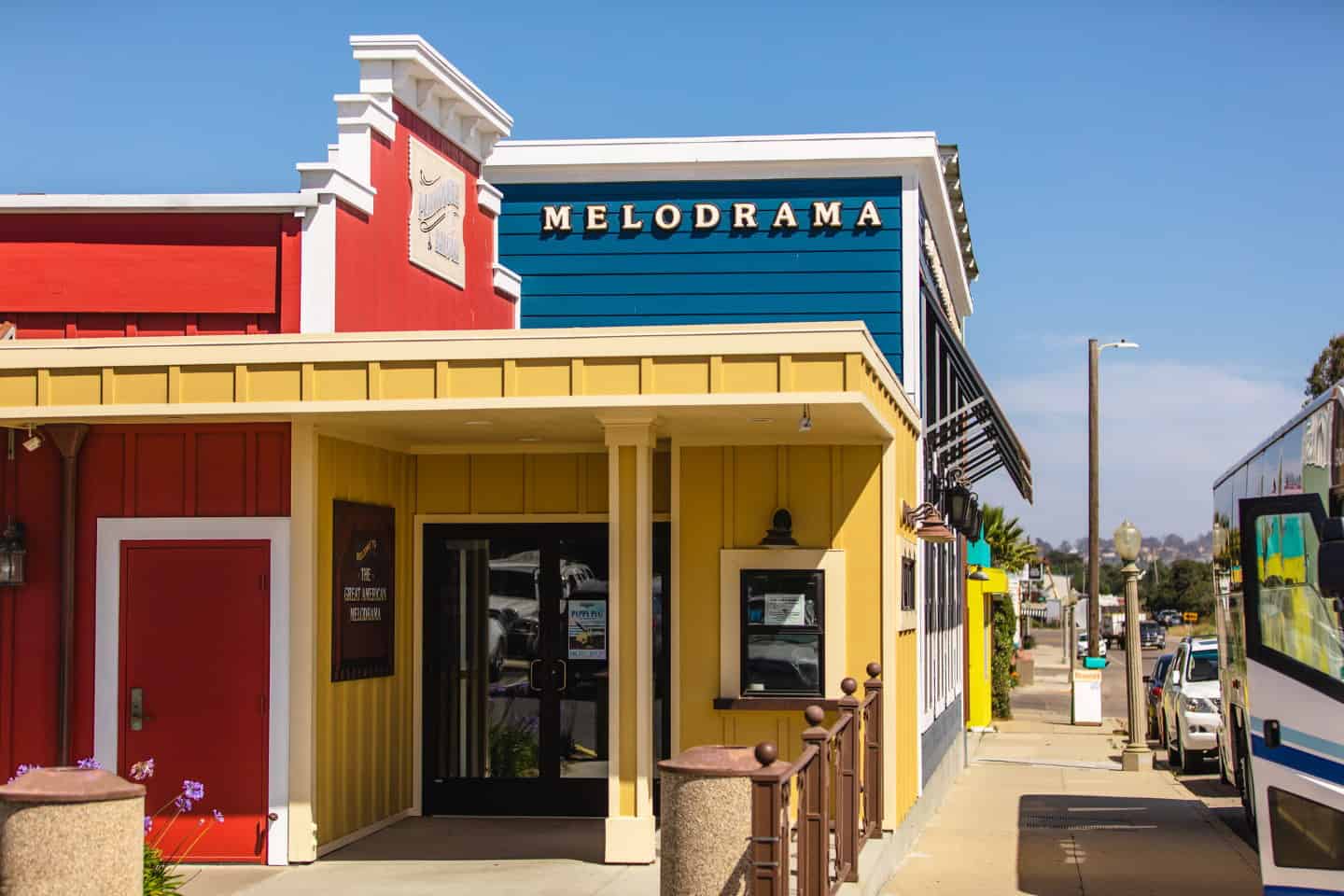
More in Nipomo & Oceano
Get ready for more arts and culture viewing opportunities in Oceano and Nipomo. From belly laughs to a historic adobe and beyond, the whole family will come away awed.
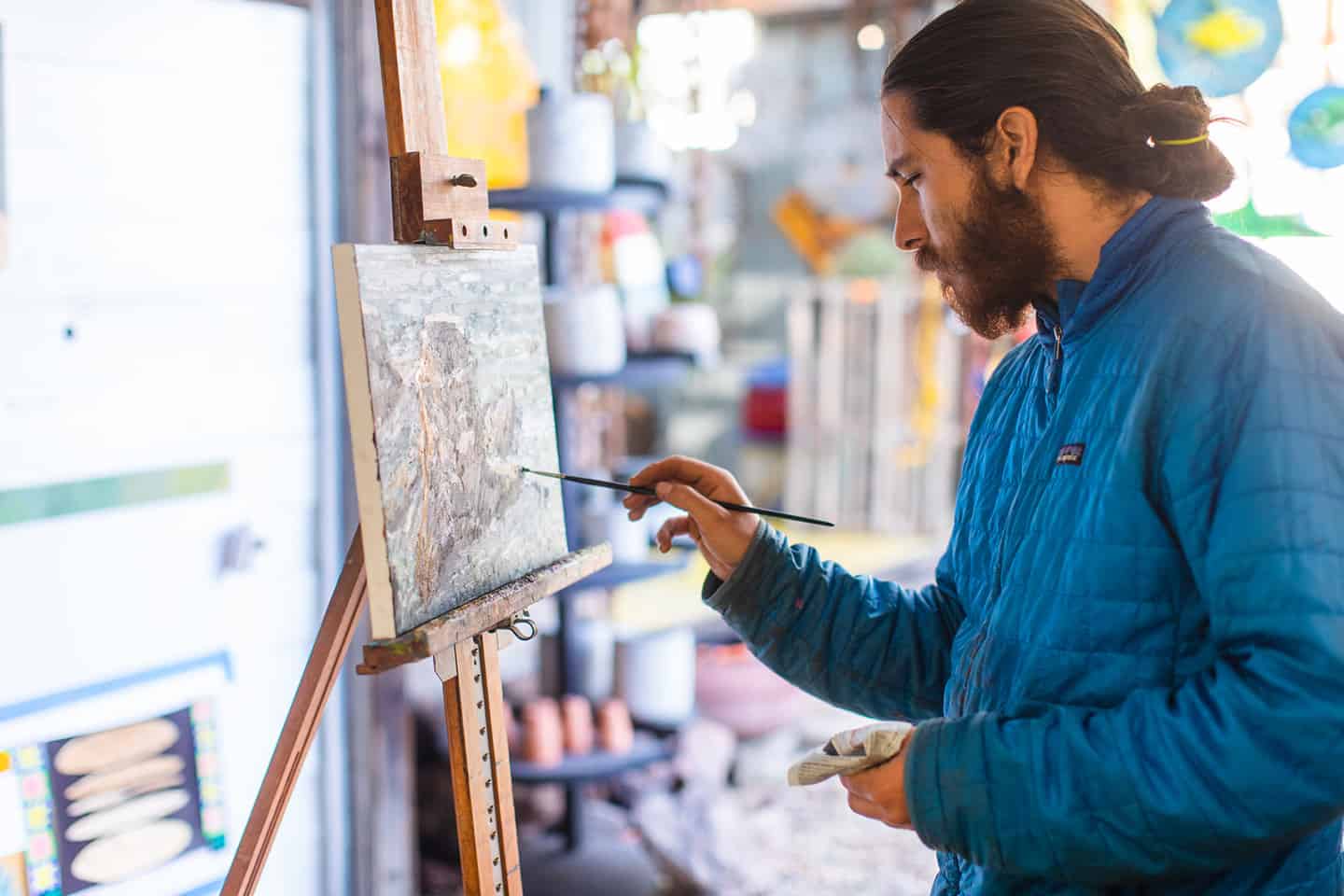
Art & Culture in Morro Bay
Gallery at Marina Square
Nestled along the picturesque Morro Bay harbor, the Gallery at Marina Square stands as a testament to the vibrant artistic community of the Central Coast. This esteemed Fine Art and Crafts gallery, established in 2003, showcases the work of nearly 60 award-winning professional artists, offering visitors a diverse array of artistic expressions. From its humble beginnings as an offshoot of a San Luis Obispo co-op, the Gallery at Marina Square has blossomed into a premier destination for art enthusiasts. The gallery features an impressive range of mediums, including paintings, sculptures, photography, jewelry, glasswork, woodcrafts, and fabric arts. Each month, the artists refresh their displays, ensuring a dynamic and ever-changing experience for repeat visitors. More than just an exhibition space, the Gallery at Marina Square fosters a sense of community among its artists and patrons. The gallery hosts opening receptions on the second Saturday of each month, providing an opportunity for art lovers to engage directly with the creators. Open daily from 11 am to 5 pm, this artistic haven invites visitors to immerse themselves in the passion and creativity of the Central Coast’s talented artists, all while enjoying the stunning backdrop of Morro Bay’s harbor.
Museum of Natural History
With 180-degree views of the Morro Bay National Estuary and Morro Rock, the Museum of Natural History is a sight to behold, both inside and out. Located within Morro Bay State Park, this popular Highway 1 destination represents the only natural history museum within the California State Park system. Explore the history of the estuary and Chumash people, plus local habitats and more. Understand how the tide affects the lives of local wildlife, including anemones, sandpipers, California sea otters and California sea lions. Hands-on exhibits and interpretive displays will delight the kids. Plus, the young and young at heart will enjoy completing a scavenger hunt, complete with prize. Everyone can partake in nature walks, special exhibits, films and tours, too. A well-stocked gift shop and knowledgeable docents round out this unforgettable educational experience.
Seven Sisters Gallery
Seven Sisters Gallery, a cherished gem in Morro Bay’s artistic landscape, offers visitors a captivating blend of local craftsmanship and global artistry. Named after the iconic Seven Sisters volcanic peaks, this gallery encapsulates the essence of the Central Coast’s natural beauty in its carefully curated collection. Specializing in unique jewelry, art and gifts, Seven Sisters Gallery showcases an eclectic array of pieces that reflect both the local environment and diverse global influences. Visitors can explore one-of-a-kind jewelry creations, from delicate pearl and silver designs to bold, statement pieces that capture the area’s coastal charm. The gallery’s commitment to supporting local artisans is evident in its selection of locally produced artwork and gifts, each item telling a story of the region’s rich creative spirit. Under the guidance of owner Patricia and manager Shawn, Seven Sisters Gallery provides a welcoming and personalized shopping experience. Their knowledgeable and friendly approach ensures that each visitor finds that perfect piece to commemorate their Morro Bay journey. Whether you’re seeking a unique souvenir or a timeless addition to your jewelry collection, Seven Sisters Gallery offers a treasure trove of artistic delights that embody the allure of California’s Central Coast.
Forever Stoked
In the heart of Morro Bay, Forever Stoked Gallery stands as a testament to the enduring power of friendship, creativity, and the surfing spirit. Founded by Charlie Clingman and Chris Pedersen, this unique art space traces its roots back to a serendipitous meeting on a small Baja California island in 1987, where two teenage surfers discovered their shared passion for art. What began as playful wall sketches in a surfer’s bunk evolved into a thriving art company. Forever Stoked, officially established in 1999, grew from a humble greeting card venture to a full-fledged gallery, opening its doors in Morro Bay in 2012. The gallery showcases a vibrant collection of surf-inspired art, ranging from original paintings and limited edition prints to an array of merchandise including stickers and t-shirts. Forever Stoked Gallery is more than just a display space; it’s a celebration of the surfing lifestyle and the creative spirit it inspires. Visitors can immerse themselves in the colorful, dynamic works of Clingman, Pedersen and other talented artists who have joined the “Forever Stoked crew” over the years. This welcoming venue offers art enthusiasts and surf lovers alike the opportunity to view stunning original works and even meet the artists behind them, embodying the laid-back yet passionate ethos of Highway 1’s famous surf culture.
More in Morro Bay
Looking for more arts and culture viewing opportunities in Morro Bay? You’ve come to the right place. Check out our array of creative offerings sure to delight all ages.
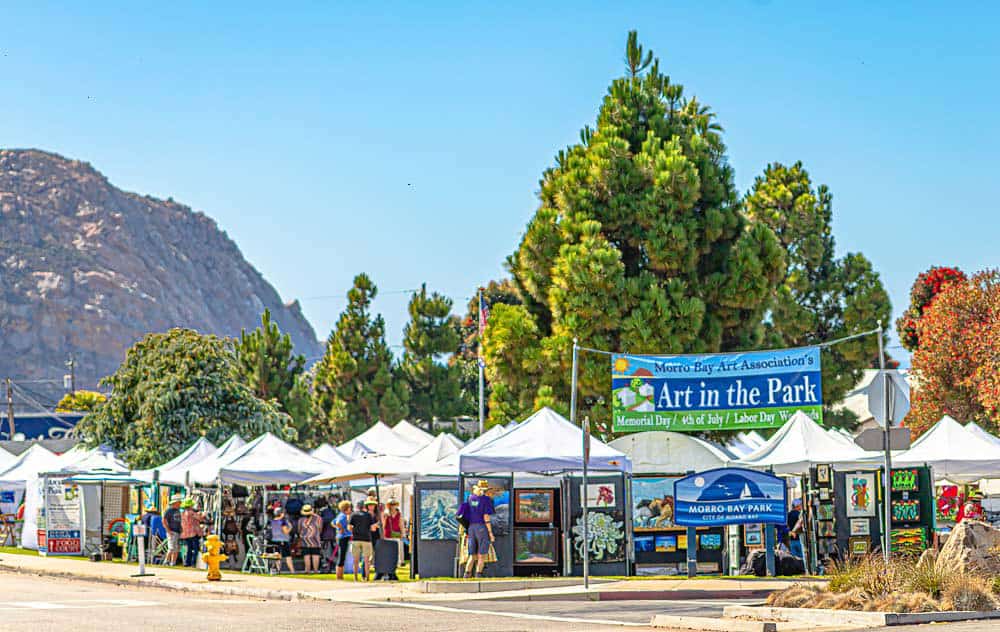
Art & Culture in San Luis Obispo
SLO Museum of Art
Located in the heart of downtown San Luis Obispo, The SLO Museum of Art stands as one of Highway 1’s most exciting creative hubs. Wander west through Mission Plaza to the museum, tucked into a corner of the park overlooking the creek. SLO Museum of Art features several gallery spaces, one of which is dedicated to the museum’s permanent collection featuring Central Coast artists. The main hall contains rotating shows from artists of national and international prominence. Previous exhibitions have included modern rug maker Faig Ahmed, London-based painter William Brickel and portrait photos from Dese’Rae L. Stage. In the lobby, the museum hosts small, interactive shows for hands-on art. Check out the rotating public art installation outside the museum’s east entrance, as well as the murals on the museum’s exterior walls. Public art can be found throughout downtown San Luis Obispo—including interactive displays in Mission Plaza. These are all thanks to the vast reach of the SLO Museum of Art.
Performing Arts Center of San Luis Obispo
The Performing Arts Center in San Luis Obispo is a world-class venue, hosting national and international touring acts with household name status. Known locally as “The PAC,” the Performing Arts Center is located on the Cal Poly University campus and consists of several venues. The best-known of these venues is the Harold Miossi Hall, which seats 1,286 guests and is home to the Fisk Opus 129 pipe organ. Built on a grand scale, this organ imitates (and rivals) organs in cathedrals and concert halls in the world’s most cosmopolitan cities. Headliners have included Jerry Seinfeld, Pink Martini, Neko Case, David Sedaris and Wynton Marsalis and the Lincoln Center Jazz Orchestra. National touring productions like Hairspray, RENT, and Jersey Boys routinely take the stage here. The Performing Arts Center also hosts resident local artists like the San Luis Obispo Opera, Civic Ballet, San Luis Obispo Master Chorale and more.
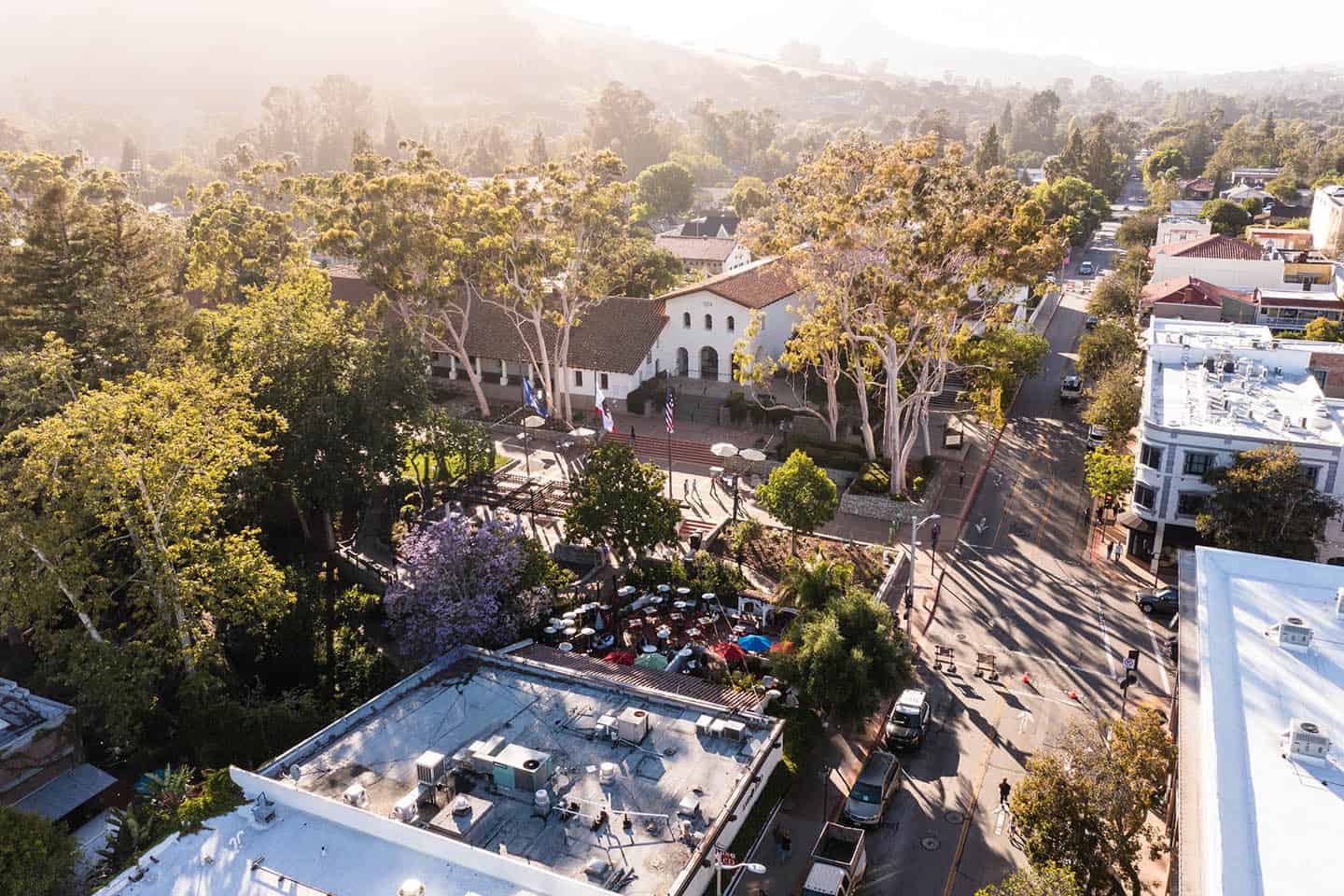
San Luis Obispo Botanical Garden
The San Luis Obispo Botanical Garden is ground zero for plants, flowers and pollinators. Highlighting greenery from the five mediterranean climate regions of the world, the operation spans 150 acres with ten acres of planted gardens. Started in 1989 as a senior project for a Cal Poly ornamental horticulture student, the gardens feature the flora and fauna of climates with characteristically mild winters and warm, dry summers. These regions include California, central Chile, the cape region of South Africa, the Mediterranean Basin and south Australia. Wander the gardens and explore the incredible collection of plants and enticing interpretive displays. Ready to stretch those legs? Take the 1.5-mile Discovery Trail that loops through the Chile and California zones with moderate elevation gain. Plus, self-guided and docent-led tours are on hand to enhance your experience. Young botanists are encouraged to check out the Children’s Garden of Exploration, a place where all ages can touch, smell, taste, learn and play.

